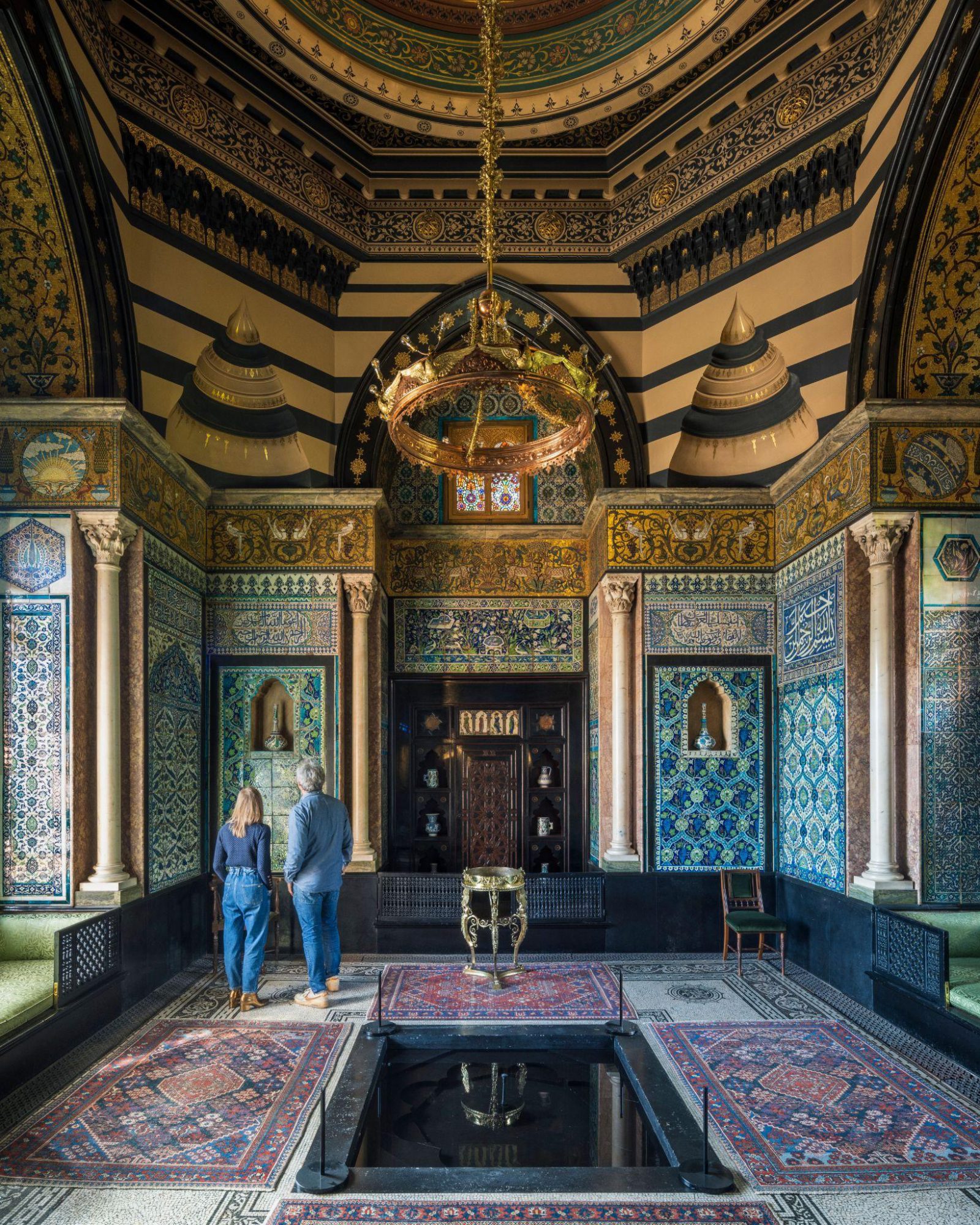The beautifully opulent Leighton House reopens on 15 October following an £8 million restoration.
The home of artist Frederic, Lord Leighton was built in 1864 to the design of his friend, architect George Aitchison RA, whom Leighton had commissioned to create a combined home and studio space on the Ilchester Estate.
Following his move to London, Leighton became associated with the Pre-Raphaelite Brotherhood (the artistic style he is mostly associated with) and the Holland Park Circle. Despite living alone, Leighton often entertained fellow artists at home and was visited by Queen Victoria who greatly admired his work. In 1899, his sisters told The Times: “He built the house as it now stands for his own artistic delight. Every stone of it had been the object of his loving care. It was a joy to him until the moment when he lay down to die.”
Leighton House is famed for its incredible Arab Hall, which is decorated with tiles that Leighton had collected during his travels to Turkey, Egypt and Syria, and has a breathtaking golden dome.
The restoration work (expertly carried out by BDP) has focussed upon the twentieth century additions where original features have been revealed. New exhibition spaces and a café have been created, too. Furthermore, we are delighted to learn that the whole site now has step-free access, so it can be enjoyed by all.
Leighton House will reopen alongside neighbouring Sambourne House which was the family home of Punch cartoonist and illustrator Edward Linley Sambourne. Sambourne House is also an absolute gem, being left virtually untouched since the Victorian era, which gifts us a fascinating insight into Victorian life and society.
Daniel Robbins, Senior Curator of Leighton House and Sambourne House, explains:
“The culmination of this many-sided project marks a truly transformational moment where both Leighton House and Sambourne reopen under a joint vision, intended to widen appreciation and enjoyment of Victorian culture, while forging meaningful connections with the contemporary world.”
Photo credit: © Leighton House

